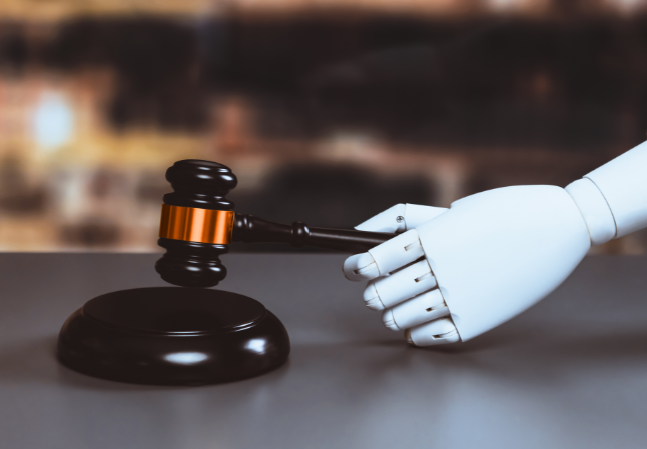Welcome! Save 30% on all CLE, CPE, and Professional Skills webinars, plus 15% off any annual pass with code HOLIDAY25
About the Course
Introduction
This CLE webinar will provide bankruptcy litigators guidance on recent developments and key issues about essential elements of fraudulent transfer law under § 548 of the Bankruptcy Code and under state avoidable transfer jurisprudence that may affect their litigation practice, whether pursuing or defending claims. The panel will discuss significant court cases on topics such as standing, implied elements of fraudulent transfer claims, what can be recovered and from whom, expansion of the lookback period under Section 544(b)(1) (and the definition of "allowable"), the non-waiver of sovereign immunity, expansion of § 546 safe harbors, and other key issues.
Description
The law of fraudulent transfers is ever changing in response to creative theories by both plaintiffs and defendants to protect assets and level the playing field if a debtor becomes insolvent. Recovering or defending against constructive or allegedly intentionally fraudulent transfers is a staple of bankruptcy practice.
The evolving fraudulent transfer landscape will affect present and future litigation strategies, as well as how transactional lawyers assess risks and structure new deals to withstand analysis made in hindsight. Decisions from certain jurisdictions or in high profile cases may have a disproportionate impact, especially if deal documents provide that the laws in those jurisdictions should govern.
Updated case law addresses core issues such as when valuation of a negotiated deal can be attacked, standing and who owns the claims, whether transfers must damage creditors to be recoverable, caps on recovery, how to analyze Section 544, and the availability of safe harbors. Of particular interest are changes as to when actual intent to hinder, delay, or defraud may not be required and intent imputed to innocent parties.
It is imperative that bankruptcy attorneys litigating and settling these claims recognize the impact of these developments and adjust their approaches to achieve the client's goals.
Listen as our panel discusses significant federal and sometimes state law decisions on game-changing topics that impact pursuing or defending fraudulent conveyance litigation.
Presented By

Mr. Hammer’s practice focuses on a broad range of creditors’ rights, netting, financial regulatory, bankruptcy, digital asset, and market infrastructure issues. He regularly advises clients regarding close-out netting rights under a variety of different U.S. insolvency regimes, including the Bankruptcy Code, the Federal Deposit Insurance Act, the Securities Investor Protection Act, the New York Banking Law, and the Orderly Liquidation Authority title of the Dodd-Frank Act, and represents clients before federal regulatory agencies and self-regulatory organizations. His clients include financial institutions, clearinghouses, sovereigns, and end users. Mr. Hammer is frequently counsel to leading financial market trade associations and ad hoc coalitions on major industry initiatives and industry-standard opinions.

Mr. Marchetti’s teaching and research interests are in the following areas: bankruptcy and reorganization, finance, secured transactions, commercial law, banking law, business associations, commercial transactions, contracts and law and economics. Before joining academia, he worked as in-house counsel at WestLB AG, which, at the time, was an international commercial bank with world-wide operations. While working at WestLB, Mr. Marchetti worked on capital markets transactions (including swaps, other derivatives and repos), chapter 11 bankruptcy matters and a wide variety of commercial finance transactions (including real estate finance, asset backed lending, lending to oil and gas companies and project finance). Before working at WestLB, he was an associate at Cadwalader, Wickersham & Taft and at Thelen, Reid & Priest in New York City. Prior to entering private practice, Mr. Marchetti served as a Judicial Law Clerk to the Justices of the Massachusetts Superior Court.

Mr. Miller is a director at Bayard. He concentrates his practice in the areas of corporate bankruptcy and restructuring, representing debtors (both voluntary and involuntary) and trustees, in addition to asset purchasers, landlords, official committees of unsecured creditors, secured creditors, vendors, and preference and fraudulent transfer litigants in bankruptcy courts across the country. Mr. Miller's clientele stems from a wide range of industries, including aviation, blockchain/cryptocurrency, restaurants, insurance, retail, healthcare, energy, and education, among many others, and he has worked with them on both in-court and out-of-court restructuring matters. He is a frequent speaker and author on these topics and others in the restructuring space, including with respect to cryptocurrency, blockchain, and the treatment and valuation of virtual assets in bankruptcy. Mr. Miller is also a certified mediator for the United States Bankruptcy Court for the District of Delaware and is included on the Register of Mediators and Arbitrators maintained by the Court. He has also served as an expert witness in the areas of restructuring and insolvency.
-
This 90-minute webinar is eligible in most states for 1.5 CLE credits.
-
Live Online
On Demand
Date + Time
- event
Thursday, August 7, 2025
- schedule
1:00 p.m. ET./10:00 a.m. PT
I. Recent trends in fraudulent conveyance law
A. Standing
B. Intent
C. Valuation
D. Recovery
E. Limits on trustees' powers
II. Defenses
A. Good faith and reasonably equivalent value (Sections 548(c) and 550(b)(1))
B. The safe harbor defenses (Section 546(e))
III. Recent cases and other developments
The panel will review these and other important issues:
- When can the bankruptcy trustee assign or sell avoidance actions?
- Can the trustee recover even if there is no harm to creditors?
- What can be recovered and is there a cap on recovery?
- Who owns a fraudulent transfer claim and when do creditors have the right to sue?
Unlimited access to premium CLE courses:
- Annual access
- Available live and on-demand
- Best for attorneys and legal professionals
Unlimited access to premium CPE courses.:
- Annual access
- Available live and on-demand
- Best for CPAs and tax professionals
Unlimited access to premium CLE, CPE, Professional Skills and Practice-Ready courses.:
- Annual access
- Available live and on-demand
- Best for legal, accounting, and tax professionals
Unlimited access to Professional Skills and Practice-Ready courses:
- Annual access
- Available on-demand
- Best for new attorneys
Related Courses
Recommended Resources

Transforming CLE from a Requirement to a Career Advantage
- Learning & Development
- Career Advancement
- Talent Development

Beyond Law School: Tackling the Realities of Modern Legal Practice
- Learning & Development
- Business & Professional Skills
- Career Advancement


